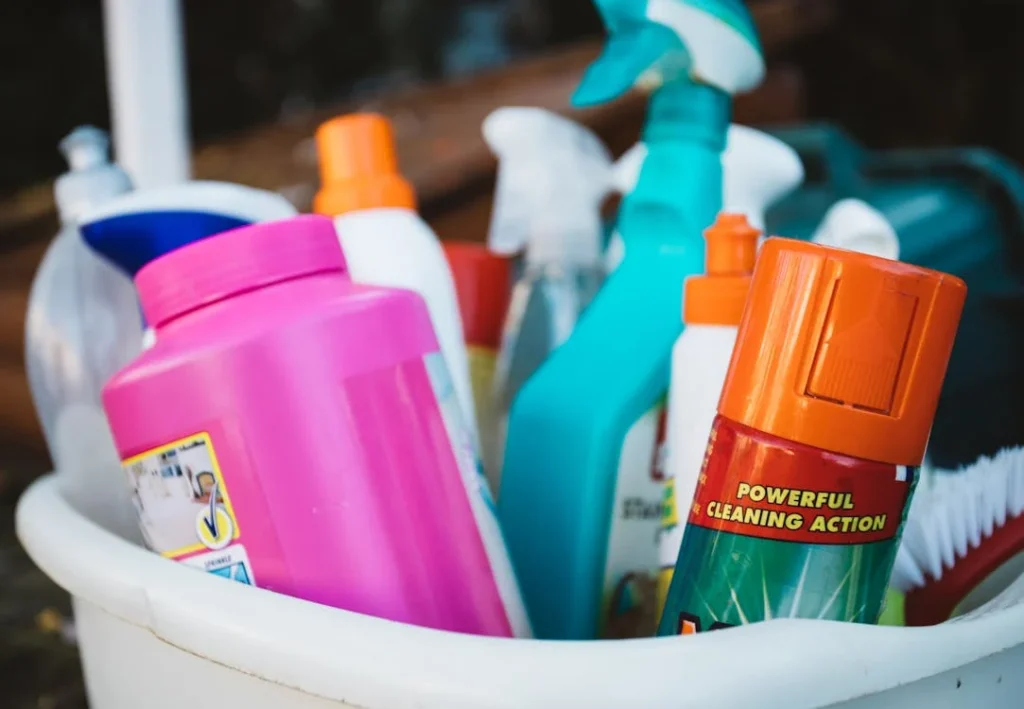Have you ever thought about what’s really in your pillow? It might look soft and comfortable, but it could be hiding harmful chemicals that affect your health over time. While pillows are designed to give you support, some of them also come loaded with toxins and allergens that can lead to health issues—from breathing problems to liver damage. Synthetic pillows, in particular, often contain things like flame retardants, pesticides, and volatile organic compounds (VOCs), which have been linked to serious conditions, including hormone disruptions and even cancer.
Let’s dig into the common chemicals found in pillows, the risks they bring, and how you can make smarter, healthier choices for your family. It’s easier than you think to switch to safer options and improve your sleep quality.
Chemicals Commonly Found in Pillows

It’s easy to overlook, but your pillow might be filled with materials that aren’t so great for your health. Many common pillows contain chemicals that could cause problems if you’re exposed to them regularly. Let’s take a closer look:
Flame Retardants
Some pillows are treated with flame retardants, like PBDEs, which have been linked to issues such as cancer, hormone imbalances, and even fertility troubles. These chemicals can stick around in your body over time, making them even more concerning.
Pesticides
If your pillow is made from regular, non-organic cotton, it could still have pesticide residue from when it was grown. These chemicals can lead to hormone problems, developmental delays, and are even tied to cancer in some cases.
Formaldehyde
This one’s pretty well-known as a harmful substance. Sometimes used in pillow fabrics, formaldehyde is a carcinogen, meaning it can cause cancer. Plus, it can release fumes that irritate your eyes, nose, and throat, especially if you’re breathing it in while you sleep.
Fragrances
Some manufacturers use artificial fragrances to mask chemical smells. While it might seem nice at first, these scents can actually trigger headaches, sore throats, and other unpleasant symptoms—especially if you’re sensitive to perfumes or strong smells.
Polyester
Polyester is commonly found in pillow fillings, but it’s a synthetic material made from petroleum. Over time, it can break down and release chemicals that may irritate your skin or cause breathing issues.
These chemicals may not seem like a big deal at first, but over time, constant exposure can add up and lead to bigger health concerns. Knowing what’s inside your pillow is the first step in making healthier, more informed choices.
Health Risks of Toxic Pillows
The stuff inside your pillow might be doing more harm than you realize. One of the biggest concerns is how the chemicals used in some pillows can affect your breathing. Many pillows give off VOCs (volatile organic compounds), which can make it harder to breathe, especially if you have asthma or other lung issues. Over time, inhaling these fumes night after night can take a toll on your lungs.
Another problem is allergies. Dust mites, mold, and bacteria love hanging out in pillows, especially if the conditions are warm and humid. This can leave you sneezing, dealing with itchy eyes, or waking up with irritated skin. If you’re already sensitive to allergens, your pillow could be making things worse.
Long-Term Health Risks
The longer you’re exposed to pillow chemicals, the bigger the risks become. Things like PBDEs and pesticides can build up in your body over time, potentially causing damage to your liver and kidneys. Your body has to work extra hard to flush out these toxins, which isn’t ideal in the long run.
These chemicals can also mess with your hormones. Flame retardants, in particular, can throw your system off balance, affecting things like fertility and your metabolism. And then there’s formaldehyde, a chemical that’s been linked to cancer, which can increase your risk if you’re exposed to it over a long period.
Toxic Pillows to Avoid
Not all pillows are created equal, and some can actually do more harm than good. Here are a few types you might want to reconsider:
Memory Foam Pillows
Memory foam pillows might feel nice, but they can release chemicals called VOCs. These fumes can cause headaches, dizziness, or even breathing problems over time. The longer you use them, the more exposure you have to these chemicals.
Down and Feather Pillows
These pillows seem natural, but they’re often treated with chemicals to keep the feathers clean. Plus, they can trap things like dust mites, which isn’t great if you have allergies. Some even use glue to hold the filling together, which could add more unwanted chemicals into the mix.
Synthetic Latex Pillows
Even though these are often marketed as eco-friendly, synthetic latex pillows can still contain chemicals that release fumes. Some also have foam inside, which brings the same issues as memory foam.
If you’re using any of these, it might be worth looking into a more natural option. Safer pillows can make a real difference for your health and your sleep.
A Healthier Sleep Starts with a Safer Pillow

Your pillow might seem like a small thing, but it can actually affect your health in a big way. A lot of pillows are packed with chemicals and allergens that you breathe in every night, which can lead to problems like breathing issues or even long-term health risks.
The good news is, switching to safer pillows is pretty easy. Look for ones made from natural materials and steer clear of those treated with harmful chemicals. Washing your pillows regularly and using covers can also help keep allergens at bay. These simple changes can make a real difference, helping you sleep better and stay healthier.



